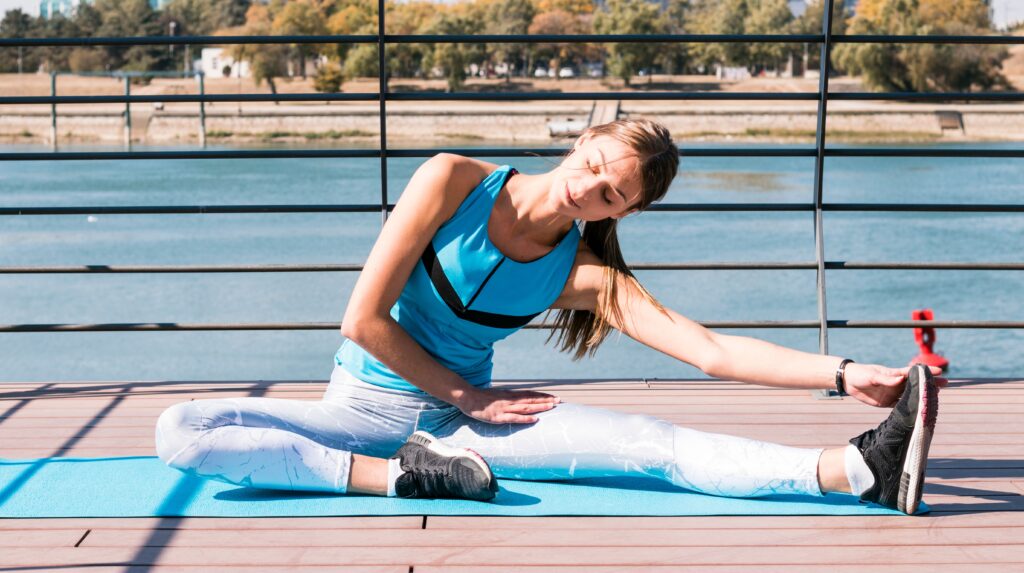Living in today’s fast world is the art of letting go of tension and cultivating relaxation. If you’re looking for a simple yet effective strategy that may help improve your physical and mental health, somatic stretches are what you need. Unlike traditional stretches, in their nature, somatic stretches are all about awareness, soft movements, and a mindful connection between the mind and body.
In the following blog, I will introduce you to 10 somatic stretches that help release tension and boost relaxation. These are excellent for anyone looking to let go of stress, improve flexibility, and simply feel more connected with his or her body.

What is Somatic Stretching?
Somatic stretching is a kind of movement therapy characterized by increased bodily awareness and the release of chronic muscular tension. Contrary to other forms of stretches, which might work only on muscles and tendons, somatic stretches require one to move with slow and intentional movements to retrain the nervous system. The key idea is to enhance your brain’s communication with your muscles to better ease that tension and enjoy greater range.
The somatic stretches would have several effects or benefits if done routinely, including reduction of pain, ability to become more flexible, change in posture, and, above all, deep relaxation.
Preparing for Somatic Stretching
First, we must prepare our body and mind for the stretches. Find a quiet area that will not distract you with distractions, wear loose, comfortable clothing, and be on a mat or soft surface to show off these stretches. Also, consider natural breathing; the presence and signs of your body as you go through each stretch.
10 Somatic Stretches to Reduce Tension and Boost Relaxation
Let’s dive into ten somatic stretches to help you release muscle tension, enhance relaxation, and be more comfortable within your body.
The Arch and Curl
This will stretch the muscles that run along your spine and down your back:
- Lie on your back, knees bent, and feet flat on the floor.
- Inhaling, gently allow your lower back to press away from the floor.
- Exhaling, curl your pelvis and lower back back down.
- Repeat several times, paying attention to the feeling of release in your back muscles.
The Back Lift
The back lift will contribute to removing tension within the upper back and in your shoulders.
- Lie face down while keeping your arms at your sides.
- Inhale slowly, lifting your head and shoulders off the floor using your back muscles.
- Slowly return to the floor while exhaling.
- Perform the movement in a slow, controlled manner, focusing on muscle engagement.
The Hip Roll
Release tension in your hips and lower back.
- Lie on your back with knees bent.
- On exhalation, allow both knees to gently fall to one side.
- Return to the centre as you inhale.
- Repeat on the opposite side, releasing tightness in the lower body.
The Side Bend Stretch
Great for releasing tension along your waist and improving side body flexibility.
- Start with your feet at hip-width.
- Raise one arm overhead.
- Gently lean to the opposite side, feeling a stretch along your side.
- Return to the centre and repeat on the other side.
The Pelvic Tilt
A somatic stretch for lower back pain and core engagement.
- Lie on your back with knees bent and feet flat on the floor.
- As you exhale, gently tilt your pelvis up toward the ceiling, flattening your lower back into the floor.
- As you inhale, release the tilt.
- Repeat several times, feeling smooth pelvic movement.
The Leg Drop
Helps with leg and hip muscle tension.
- Lie on your back, extend one leg, and bend the other at the knee.
- Allow the extended leg to fall gently to the side, keeping it straight.
- Return to the centre and repeat on the other side.
- This enhances hip mobility and releases leg tension.
The Arm Reach
Releases tension in the upper back and shoulders.
- Stand with feet hip-width apart.
- Take one arm overhead and arc it slightly backward, creating a cross-torso stretch.
- Return to the start and repeat with the other arm.
The Diagonal Reach
Improves cross-body movement and coordination.
- Stand with feet hip-width apart.
- Take one arm diagonally across the body while slightly pivoting the opposite foot.
- Return to the centre, repeating on the other side.
- Feel the release through the torso and shoulders.
The Neck Release
Relieves tension in the neck and upper back.
- Sit or stand comfortably.
- Gently tilt your head to one side, bringing your ear towards your shoulder.
- Hold for a few breaths and repeat on the other side to loosen the neck area.
The Full-Body Release
A complete relaxation for your body.
- Lie on your back with arms and legs stretched apart.
- Close your eyes and take deep breaths.
- Let your entire body sink into the floor, releasing tension and fostering a deep sense of calm.
Maximizing the Benefits of Somatic Stretches
For a complete and total benefit of your practice in somatic stretching, make sure to hold consistency. Practice these stretches a few times a week, or if possible, each day. Apply deep, conscious breathing and presence, and your body will relax. Remember to be sensitive to your body’s signals and adjust the stretches toward comfort.
Common Questions About Somatic Stretching
How Often Should You Practice Somatic Stretches?
- It is recommended to practice somatic stretching at least 3-4 times a week for better results. However, you may increase or decrease the frequency according to your comfort and goals.
Can Somatic Stretching Help with Specific Conditions?
- Yes, somatic stretching can be of great help in treating chronic pain, anxiety, and stress. It helps re-educate the nervous system to release tension, which can, in turn, help reduce symptoms of these conditions.
Is It Always Safe for Anybody to Do Somatic Stretch?
- Generally, speaking, most people are safe doing the somatic stretching, but if one has health conditions of some sort, consulting a health professional first is always best.
Incorporating Somatic Stretches into Your Routine
Somatic stretching can be combined with other modes of exercise like yoga or Pilates to offer a generally well-rounded program of workout. Alternatively, one can create a personally tailored somatic stretching program in which you select a few stretches that target particular problems you experience and practice those regularly.
Conclusion
Somatic stretching is an efficient, yet easy way to reduce tension and enhance general relaxation and well-being. Make sure to add these ten basic somatic stretches to your daily routine for a more mindful practice that will help improve both your physical and psychological health. The time to begin practising it is now, and see for yourself!
Additional Resources
For more stretching tips and information on relaxation and fitness, check the other articles at Health Hertz. Learn all about the power of bodily stretches and see how it could make your life a whole lot healthier and more relaxed.










